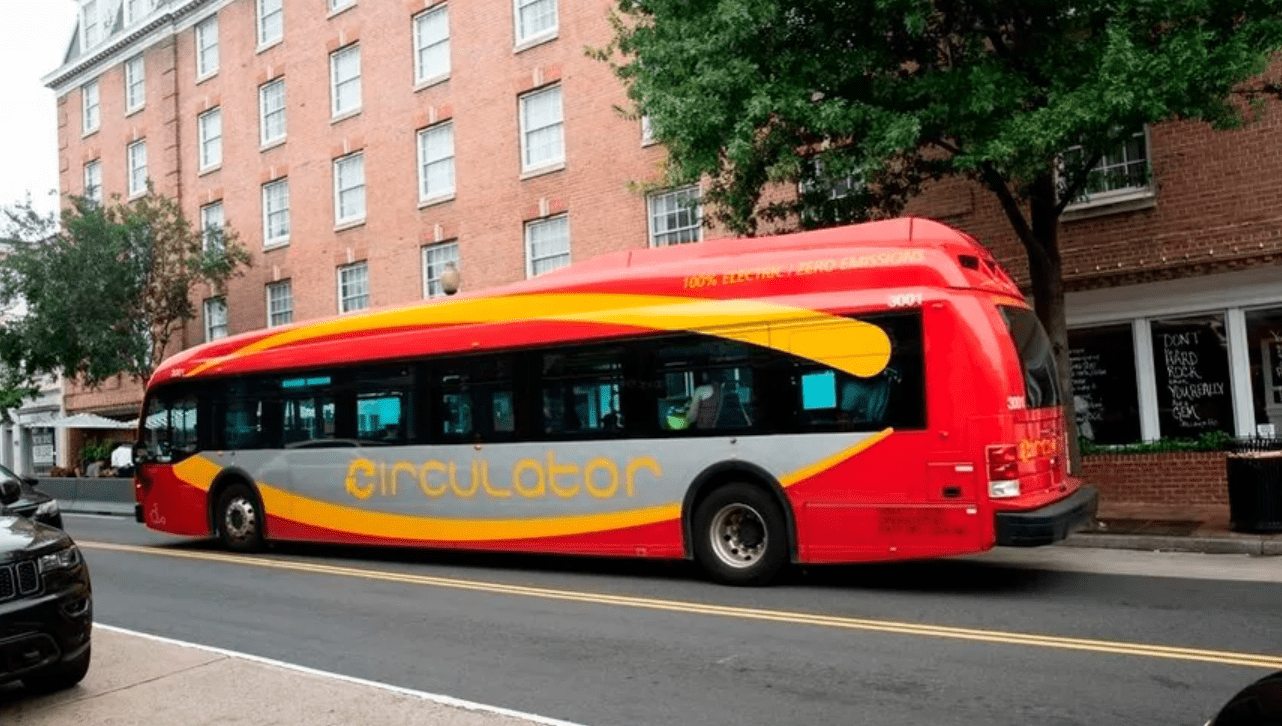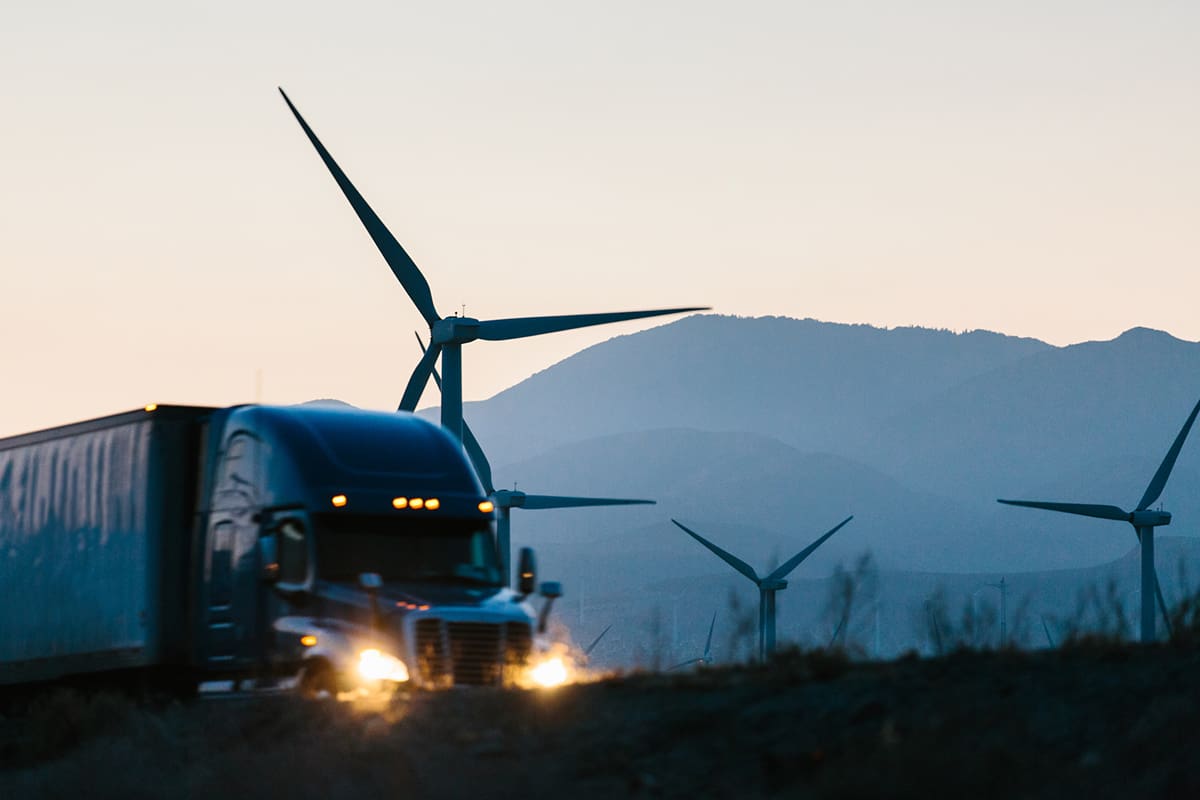
- News Story
The US’ Billion-dollar EV Bus Program Can’t Keep up With Demand
June 29, 2023
Source: Canary Media
There’s good news and bad news from the $1.7 billion in grants the U.S. Department of Transportation awarded for bus decarbonization projects this week.
For many transit agencies, federal grants like those announced Monday can supply a vital boost to their plans to switch to electric buses and slash emissions from carbon-intensive bus fleets. But the demand for all-electric buses far exceeds the amount of money Congress has appropriated for them. Meanwhile, money earmarked specifically for low-emissions fossil-fueled buses remains unavailable to transit agencies that want to go the 100 percent zero-emissions route.
The 2021 Bipartisan Infrastructure Law, where these new grants stem from, significantly boosted federal clean-bus program funding from previous levels.
But a much-criticized clause in the law also required at least 25 percent of the funding from the most lucrative stream of grants to go to low-emissions buses, rather than zero-emissions buses. The provision was lobbied for by a fossil gas industry group in support of compressed natural gas (CNG) buses in particular, which are less polluting than diesel-fueled buses but still produce planet-warming and smog-forming emissions.
The Sierra Club highlighted this disconnect in its Monday press release praising the “historic levels of funding” from the infrastructure law.
“Residents across the country can benefit from cleaner air and reduced climate pollution” to come from electric buses and infrastructure receiving federal grants, said Eric Willadsen, campaign representative with the Sierra Club’s Clean Transportation for All campaign. But “arbitrary caps on how funding can be distributed are a major barrier to maximizing community benefits from zero-emissions buses.”
This week’s funding will enable the purchase of more than 1,700 U.S.-made buses across 46 states and territories. Of those, “nearly half” will be zero-emissions buses, according to Monday’s statement, the vast majority of them battery-electric. The remainder will be “low-emissions” vehicles such as diesel-electric hybrids or CNG-fueled buses, prompting concern from environmental advocates who say that these buses are in low demand and also will unnecessarily lock in transportation-sector emissions.
The Low-No push-pull
Buses and other heavy-duty vehicles are responsible for a disproportionate share of the carbon and air pollution emissions from the transportation sector, making them a key target for policymakers trying to combat climate change and improve public health, particularly in the lower-income and disadvantaged communities that suffer the worst air pollution.
Transit buses in particular have been electrifying faster than any other class of vehicle in the world, with their regular routes, slow driving speeds and centralized depots making them ideal candidates for the switch. BloombergNEF projects that half of the world’s buses will be battery-powered by 2032.
For its part, the U.S. had about 5,480 battery-electric buses as of September 2022, a 66 percent increase from 12 months prior, according to Calstart, a nonprofit representing vehicle manufacturers, utilities, companies and government agencies on clean transportation policy. That’s still a fraction of the roughly 60,000 transit buses operated by more than 1,000 transit agencies across the country, however.
The new batch of grants will help close that gap. It’s the second round of grants from two Federal Transit Administration programs that received $7.5 billion through 2026 — a sixfold increase from their previous funding levels — via the infrastructure law. Last year, the Department of Transportation awarded more than $1.6 billion in grants to fund the purchase of up to 1,100 zero-emissions buses and another 700 fossil-fueled buses.
This year’s 130 awards include a mix of small and large-scale projects, from sub-$1-million grants to rural transit agencies to as much as $104 million for the Washington, D.C. transit authority to buy about 100 electric buses and refurbish a depot to charge and maintain them.
Still, the demand for grants remains far higher than the amount of federal funding available — even despite the fact that many larger transit agencies have already invested heavily in electric bus fleets on their own. The Federal Transit Administration received about $8.7 billion in eligible project proposals for the just-announced round of grants, the majority for zero-emissions vehicles and associated infrastructure and assistance.
But a provision in the 2021 infrastructure bill has limited the government’s flexibility to match the demand for electric buses. U.S. Senator Pat Toomey, a Republican from the fossil-gas-producing state of Pennsylvania who retired last year, inserted a clause in the law that requires at least 25 percent of the $5.6 billion over five years appropriated for the Low or No Emission (Low-No) Grant Program to go to projects “other than zero-emission vehicles and related facilities.”
That carve-out hasn’t matched up with what transit agencies are asking for, according to a May report from the nonprofit group Transportation for America. Its analysis of last year’s awards from the Low-No program found that the amount of funding being sought for zero-emissions bus projects well exceeded the amount of funding available, with only 33 percent of applications receiving grants.
The funding available for low-emissions fossil-fueled projects, by contrast, exceeded the amount sought by applicants, leaving a small amount unspent, said Chris Rall, outreach director for T4A. While his group hasn’t analyzed the latest round of funding yet, “we hypothesize there will be more applications for low-emissions projects because there are incentives for agencies to do that,” he said.
“A lot of them are still going to make that choice to get their fleets a little bit cleaner and to replace buses,” potentially locking them into a decade or more of using fossil fuels instead of switching to zero emissions, he said. “It’s a major challenge for transit agencies to get the fueling infrastructure they need to transition their fleets.”
Public funding does help transit agencies be able to afford to replace older, more polluting buses with less-polluting fossil-fueled options, said Nate Springer, vice president of market development for transportation-consulting firm GNA. Compressed natural gas buses have been on the roads for decades, he noted. The technology is “mature, it’s available, it’s proven by transit agencies, and it cuts air pollutants dramatically” compared to diesel buses.
On the other hand, government funding is also meant to “help seed a new market,” Springer said. “It allows fleets and transit agencies to take some risks,” working around the constraints of tight capital and operating budgets to deploy newer technologies.
Battery-electric and hydrogen-fuel-cell-powered buses still cost about 150 to 200 percent more than diesel-fueled buses, he said. They also require extensive charging or fueling infrastructure that’s now hard to come by, as well as a workforce that’s trained to operate and maintain them, Springer added. “The next role of funding is, how do you incentivize early adopters, which do have budget limits, but also aggressive clean air and climate goals,” to overcome those constraints, he said.
The right combination of upfront and long-term incentives can bring electric buses to cost parity with fossil-fueled buses in terms of their total cost of ownership over their useful lifetime, Springer noted. “You should be able to save on electricity with managed charging, so your fueling costs go down. You should be able to save on maintenance once your teams become effective at it.”



